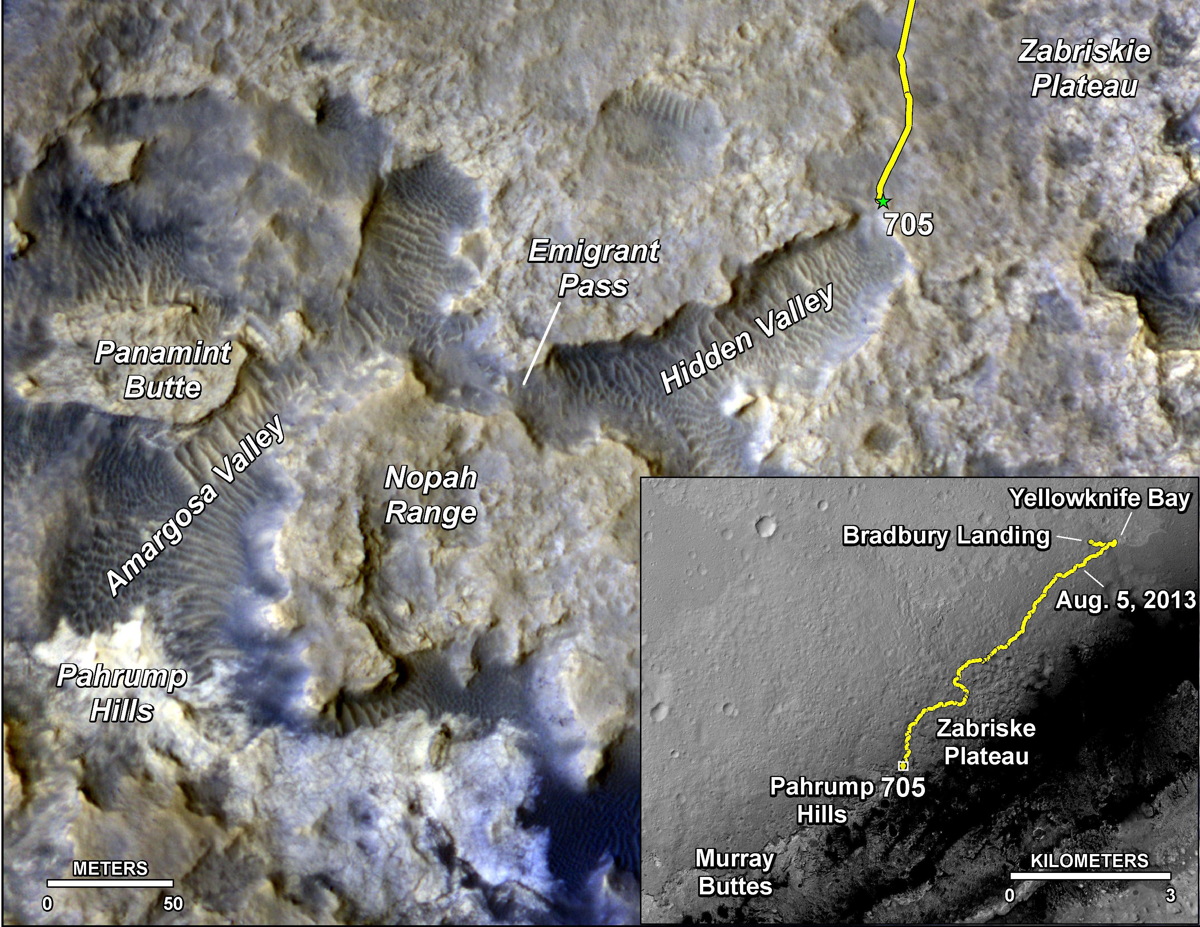
Two years after touching down on Mars, NASA’s Curiosity rover is about to get its first up-close look at the rocks that make up its ultimate destination on the Red Planet.
Curiosity, which landed inside Mars' huge Gale Crater on Aug. 5, 2012, is just 1,650 feet (500 meters) from an outcrop that's part of Mount Sharp, the 3.4-mile-high (5.5 kilometers) mountain drawing Curiosity like a big, dusty beacon in the Red Planet sky, NASA officials said.
"We're coming to our first taste of a geological unit that's part of the base of the mountain rather than the floor of the crater," Curiosity project scientist John Grotzinger, of the California Institute of Technology in Pasadena, said in a NASA statement. "We will cross a major terrain boundary." [Amazing Mars Rover Curiosity's Latest Photos]

The 1-ton Curiosity rover’s main goal is to determine if Mars could ever have supported microbial life. The rover's observations helped mission scientists answer that question in the affirmative last year; they determined that an area near Curiosity’s landing site called Yellowknife Bay was indeed habitable billions of years ago.
Curiosity left Yellowknife Bay in July 2013, heading out on a long trek to the foothills of Mount Sharp. The rover’s handlers want Curiosity to climb up through the mountain’s lower reaches, which preserve a record of the Red Planet’s transition from a relatively warm and wet planet in the ancient past to the cold and dry world we know today.
Curiosity has covered about 5 miles (8 km) during the trek so far and still has 2 to 2.5 miles (3 to 4 km) left to go, mission team members said. They expect the six-wheeled robot to reach its targeted location at Mount Sharp’s base by the end of this year.
The journey has been quite rocky at times. Indeed, last month's 660-foot (200 meters) traverse across a region called the "Zabriskie Plateau" took a toll on Curiosity's aluminum wheels, mission officials said.
Get the Space.com Newsletter
Breaking space news, the latest updates on rocket launches, skywatching events and more!
"The wheels took some damage getting across Zabriskie Plateau, but it's less than I expected from the amount of hard, sharp rocks embedded there," said Curiosity project manager Jim Erickson.
"The rover drivers showed that they're up to the task of getting around the really bad rocks," Erickson added. "There will still be rough patches ahead. We didn't imagine prior to landing that we would see this kind of challenge to the vehicle, but we're handling it."
Curiosity's wheels began accumulating a lot of nicks and dings toward the end of 2013, prompting the rover's handlers to seek routes across less punishing Gale Crater terrain and try out techniques to reduce the wear, such as driving Curiosity backward from time to time.
Mission team members had to deal with another issue late last month as well. Curiosity’s backup computer began acting up a bit, and the rover had to stand down for two days while engineers made sure the computer was still reliable, NASA officials said.
Follow Mike Wall on Twitter @michaeldwall and Google+. Follow us @Spacedotcom, Facebook or Google+. Originally published on Space.com.
Join our Space Forums to keep talking space on the latest missions, night sky and more! And if you have a news tip, correction or comment, let us know at: community@space.com.

Michael Wall is a Senior Space Writer with Space.com and joined the team in 2010. He primarily covers exoplanets, spaceflight and military space, but has been known to dabble in the space art beat. His book about the search for alien life, "Out There," was published on Nov. 13, 2018. Before becoming a science writer, Michael worked as a herpetologist and wildlife biologist. He has a Ph.D. in evolutionary biology from the University of Sydney, Australia, a bachelor's degree from the University of Arizona, and a graduate certificate in science writing from the University of California, Santa Cruz. To find out what his latest project is, you can follow Michael on Twitter.









